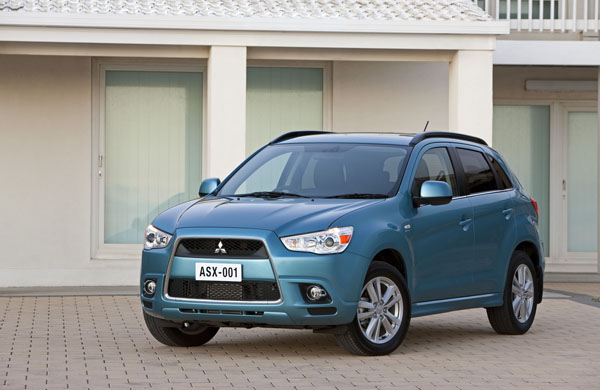
Mitsubishi ASX, which stands for Active Sports Crossover, as opposed to SUV, is aimed more at on-road use than tackling the Aussie bush. It can be used on dirt roads, forest trails and the like if you know what you’re doing.
That is if you buy one with all-wheel-drive, the two-wheel-drive (front wheels) ASX really should be used only on sealed roads, though smooth, dry, dirt roads can usually be tackled without any real hassles.
Mitsubishi ASX has been on sale since way back in 2010. But with upgrades and attractively low prices it continues to be a big seller on the new car market.
Although it’s based on the same platform as the Mitsubishi Outlander SUV the ASX has shorter overhangs and a more stylish look.
The first model used Mitsubishi’s “jet-fighter grille” front end, but that shape wasn’t particularly well received, so in August 2012 it received a major facelift with softer looks.
Another facelift in January 2015 gave it a slightly different appearance, as did one in November 2016. September 2017 saw a strong makeover externally and upgrades to the infotainment system.
Late in 2019 it got yet another makeover. At the press event we attended to drive it Mitsubishi Australia wouldn’t be drawn on whether this was the final iteration. However, it’s known that what appears to be a similar vehicle is well into the design stages.
The Mitsubishi ASX can carry four adults, with some sharing of legroom being required if tall travellers are being transported. As a small family SUV – Mum, Dad, three juniors – it works nicely. The boot is a good size with a volume of 426 litres when the rear seatback is upright and 1193 litres with the seatbacks folded.
The ASX is easy to drive and while not sporting it handles normal day-to-day driving competently. Ride comfort is good and the suppression of noise, vibration and harshness (NVH) works well and was improved several times during its life. Recent models from introduced by competitors in this field are noticeably better than the Mitsubishi.
Unusually in this market segment the Mitsubishi ASX comes with the of choice petrol and diesel engines. The diesels were reasonably popular in the early days but were discontinued in 2017 due to a lack of buyer interest.
Manual and automatic transmission are offered with both engine types but manuals are becoming less and less popular, so manual ASXs may not retain their value as well.
Mitsubishi hasn’t manufactured cars in Australia for many years but is still well represented here, with plenty of dealers in the metro areas and quite a few in country cities and larger towns.
Spare parts prices are generally reasonable and we have heard of no real holdups in delivery.
Insurance costs are reasonable as most companies regards the ASX as a family hatch with no sporting overtones.
WHAT TO LOOK FOR
Given its extended period of time on the market it’s no surprise that there have been quite a few recalls. Go to the ACCC at: www.productsafety.gov.au/products/transport/cars/ then click on Mitsubishi.
Check the remote-control key, not sold on all models, works correctly on the doors and the engine-startup.
If a sunroof is fitted give it a good solid wiggle to make sure it hasn’t come loose. If it has, make sure a dealer fix is carried out before you buy the car.
It’s unlikely an ASX will have been off-road, but if you suspect one has it’s perhaps best to give it a miss and opt for one of the ninety-something percent that have always been
on sealed surfaces.
Signs of off-road use are scratches on the paint of the bumper corners, the guards and the doors.
Underfloor damage is a no-no, though if the price is very favourable and professional mate can repair it you could get a bargain.
Check the engine starts easily – early morning when it’s stone cold is ideal. The diesel won’t kick over as quickly as the petrol but shouldn’t lag by too much.
Look over the seats for signs of hard wear, particularly in the back. Similarly look for rough treatment in the boot.
HOW MUCH?
Budget on spending from $5000 to $8000 for a 2010 ASX 2WD; $7000 to $11,000 for a 2011 Luxury 2WD; $10,000 to $15,000 for a 2013 Aspire AWD or a 2014 LS AWD; $13,000 to $19,000 for a 2015 XLS AWD; $14,000 to $20,000 for a 2018 Black Edition AWD; $15,000 to $22,000 for a 2017 LS AWD; $16,000 to $23,000 for a 2018 Exceed 2WD; and $19,000 to $27,000 for a 2019 GSR 2WD.
RECALLS: To browse recalls on all vehicles go to the ACCC at: www.productsafety.gov.au/products/transport/cars/